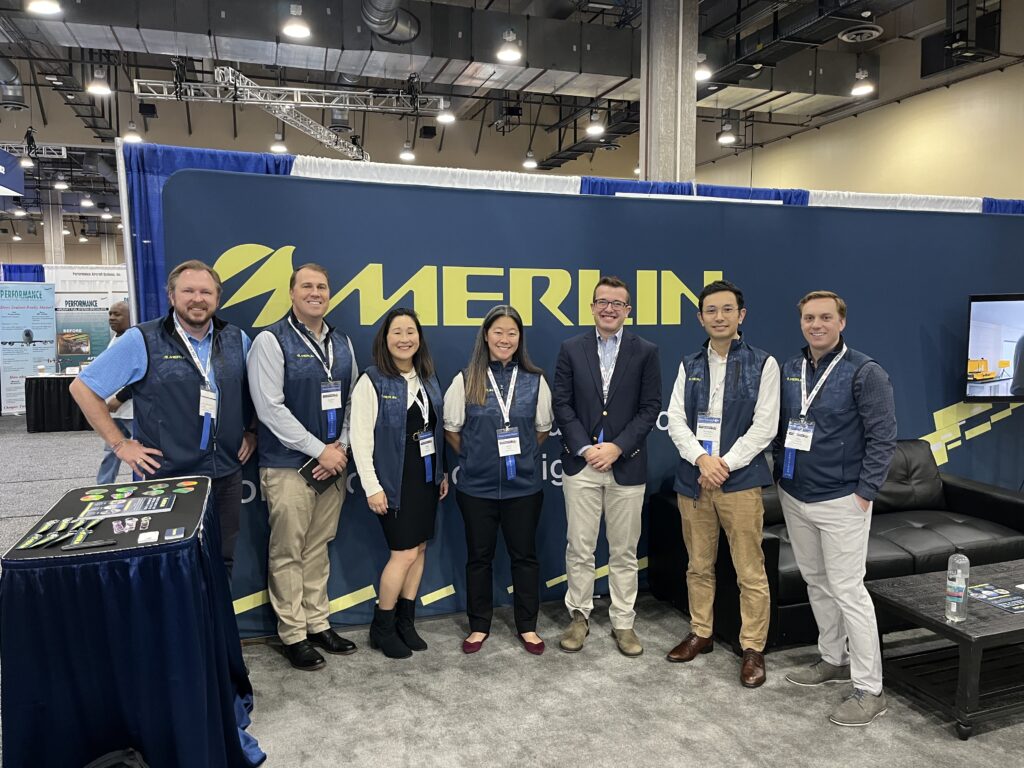
Founder: Matt George
Founding: 2018
Mission: Create the world’s most capable pilot leveraging technology as the key enabler of air network resiliency
Employees: 100+ & 25% Local
Workplace: Hybrid
Stage & Capital Raised: Series B & $130M raised
Investors: Baille Gifford, First Round Capital, Snowpoint, & GV
Key Customers: United States Department of Defense
Glassdoor Rating: 4.4
Valuation (estimated): $400M+ (assuming they sold 10-20% of the company in the Q2 ‘22 $105M Series B fundraise)
^ this is a useless number. There is no tangible valuation until the business is sold or goes public. Don’t forget it!
Merlin is building an integrated hardware and software solution, the Merlin Pilot, to create an advanced automation system for aircraft. They are the leading developer of certified autonomy for aircraft, with technical capabilities that allow it to assist and augment existing pilots in flight. Merlin is not only primed for takeoff, the Merlin Pilot is already flying with 500+ systems-on missions completed to date.
This startup story begins a few months after the conclusion of founder Matt George’s previous company, Bridj. Matt and his team were building a ground transportation network to help match commuters and pool resources to deliver a dynamic, more efficient, real time mass transportation system on behalf of organizations and governments.
As the company progressed through its lifecycle, taking passengers across millions of miles of road, Bridj explored autonomous technology in an effort to scale and create competitive differentiation. The biggest learning? Fully autonomous driving is hard.
Bridj was sold to Transit Systems in 2017 and Matt took some time off to regroup and refocus on what he wanted to do next. He was fascinated by autonomy, in particular the shifting perception of how humans will be moved around the world in the years ahead. Clearly in cars, eventually. But where else? And perhaps, where first?
Matt had learned to fly in Vermont during his Middlebury undergraduate studies at nearby Shelburne Airport under the tutelage of Paul Potter. His passion for aviation was there. With just a couple rent checks left in his bank account, he went out and raised the initial capital to launch Merlin’s operations and make an impact at the intersection of aerospace, AI & robotics.
Let’s talk about the moment first. We have ubiquitous digital connectivity through the Internet. The dominant way that we physically connect from long distances is through flights over our air network. Very few people are transiting via ships, in case you didn’t know. Grandma & Grandpa from Boca aside, god bless them. The civilian air network has more or less been delivered the same way for the last 50 years. An aluminum tube, pilots, and fuel. Rinse. Repeat.
On the military side of the coin, pilot training is expensive. When the U.S. Air Force trains a pilot, it can cost between $1M and $10M depending upon the aircraft (src). Two pilots flying a C-130 represents about $5M of training costs in a single cockpit. Merlin is chipping away at bringing in the digital age of piloting, reducing operational costs and driving autonomous efficiencies & reliability for carriers.
Originally, the team conceived of creating an uncrewed airfact by putting a fully autonomous system into an airplane. This is a needed solution! But the necessary evolution was for Merlin to take a phased approach by creating an advanced automation system that would act as the second pilot onboard a larger aircraft to make it flyable by a single human. They built their business case and closed their first customer, the United States Department of Defense.
The best way to think about Merlin is they are leveraging the skills of a human pilot and translating them into software. Along this journey they’re partnering with the world’s best avionics companies to bridge the gap between humans and technology through software with some additional hardware components, from takeoff to touchdown.
In 2018 Merlin was flying small airplanes like the Piston. By 2021 they progressed to Single TurboProp planes and then Heavy TurboProp planes. In 2024 they are gearing up to bring their technology to the C130J heavy transport aircraft.
Like any disciplined startup building toward a bold future, Merlin is taking a phased approach to their process and the types of aircraft they fly. Phase one is to build trust. They’ve installed the Merlin Pilot as an advanced certified flight aid, serving as the third pilot in the cockpit of Part 23 aircraft – think TurboProp twin seat type planes. Customers enjoy fuel savings, increase in duty hours, and flexibility in SIC (second in command) eligibility through the whole flight lifecycle.
Next, they will progress to Phase two which involves taking the place of the “second pilot” in Part 25 aircraft – transport type planes carrying freight. This will enable safe reduced crew operations for military and civilian freight end users with material cost savings. The Merlin Pilot will assume control of an aircraft and perform all flying functionality. Two human pilots will remain as safety observers, retaining full authority over the system.
Phase three is augmented autonomy where the Merlin Pilot will enable uncrewed flight on smaller aircraft. Merlin will be paired 1:1 with a human crew member on the flight deck of larger aircraft, augmenting operations and flying limited routes with a specially trained subset of pilot corps. They will also expand the number of aircraft they can support for reduced-crew operations.
Phase four is full scale autonomy, Merlin’s long term vision, where the Merlin Pilot operates without restriction as one of the two pilots onboard a flight deck for larger aircraft and fully uncrewed for small aircraft. A ground pilot will still be monitoring multiple aircraft to take over in case of some type of emergency.
To date, Merlin has flown hundreds of test missions across five different aircraft types and is generating revenue in the 10s of millions of dollars from the DoD. Since 2019 they have been selected by the FAA to complete flight test trials for the first non-human piloted cargo network in the U.S., as well as selected by the USAF to bring mission-critical, single pilot operations to the C-130J. Their closest competitor is Lockheed Martin and there are limited frontier tech companies with the capabilities to build similar types of technology today.
Merlin’s biggest differentiator? They’re already out there flying. During COVID they hired their first 50 employees and are now growing the team to 150 through a hybrid culture. As a frontier tech company, one of the biggest challenges is recruiting and assembling the right team. They are blending a high-growth, venture backed software startup with an aerospace & robotics company. Many members of the team are on-site, building and testing in dedicated facilities such as here in Boston, the Mojave Desert, and New Zealand.
Over the coming quarters they are working to grow the roadmap from working with smaller aircraft to TurboProp planes to jetliners. In 2024 there will be a big push with the U.S. government to take on a wider variety of aircraft and they will continue to move the ball downfield on certification with civil regulators. For the next couple years, Merlin’s full focus will be on meeting and exceeding the expectations of the DoD.
Operators to Know (Locally):
- Shawn Bonneau, Senior Avionics Software Engineer
- Patrick DePriest, VP of Finance
- Ashley Ferguson, VP of Business Operations
- Aubrey Kalashian, Senior Software Engineer
- Joel Katz, Senior Software Engineer
- Kristen K, People Operations Leader
- William Koch, Senior Staff Software Engineer – Advanced Capabilities
- Brad Martin, Senior Software Engineer
- Ricardo Ortiz, Senior Software Engineer
- Natalija Ulemek, VP of Talent
- Ilana Petraglia, Controller
- Cory Ronan, Senior Recruiting Manager
- Jackie Scanlon, Staff Software Engineer
- Sarah Siegel, HRBP Director
- Patrick Shine, Lead Electrical Systems Engineer
- Pat Taylor, Technical Project Manager
My investigative powers continue to need work so apologies to the Merlin team I know I missed many up & coming operators internally
Key Roles To Be Hired:
- Director of Regulatory Operations and Programs
- Engineering Lead
- Flight Controls Engineer
- Lead Aircraft Systems Engineer
- Natural Language Processing Engineer
- Senior Human Factors Researcher
If I were interviewing here are some questions I’d ask:
- What are the critical milestones the team is working toward in 2024?
- What are the biggest challenges as you scale the team past 100 employees?
- How do you balance the commercial vs. government use cases for Merlin when designing the roadmap?
- What are the most important roles you’ll be looking to add in 2024 // teams that need the most help?
We’re optimizing for readability here so to learn more about Merlin Labs you’ll have to D.Y.O.R. I’m excited to watch this team bring more flights into the autonomous age. All future travelers applaud your efforts. See you in the skies!
